First Ski At Christmas
Like other important life events, many of us remember the first time we put on skis. As a small boy I felt a mystique to every aspect of skiing: the skis and boots, the smell of wax, the associated words and language, the people and characters, and of course, above all, the mountains in winter. Wrapped in my DNA was the code for sliding on two boards beneath my feet. On a cold day in December of 1972, I knew I was entering into a magical world that would take me places I could only imagine to be beautiful, adventurous, and in some way would teach me about being a man. My career in skiing has spanned forty-three years and has been all of those. I think in some way, the magic happened all on the first day. My story about that day goes like this. . .
It was Christmas in Calgary in 1972. Christmas was an exciting, busy, hopeful, and often disappointing experience for me as a kid. As the youngest of seven, there was love in broad brushstrokes but rarely in direct strikes. My mother was brilliant in preparing ice cream buckets filled with treats and goodies for us to eat. Feeding us was her language of love, though I did not understand that concept at at the time. She was busy being the perfect mom, but I needed something more. I needed adventure. Months beforehand, she diligently made fruitcake, perogies, cabbage rolls, and meatballs, freezing them all for the greatest feast of the year: Christmas Eve dinner. This dinner was a Ukrainian twelve- course affair and the one meal of the year where we did not try to take food off of each other’s plates. With seven growing bodies at the table it was usually eat or be eaten.
With all of the food and celebration there was still something missing – a shortage of one commodity. Time. Focused one-on-one time in nature. Amongst all of the food, beverages, and Christmas celebration, we typically did not make real and important connections with each other that were based in acceptance, interest, and the desire to understand. The epidemic of anonymity existed in our family of nine: all of us wanting attention, but unskilled at being present with one another; parents just as needy and lost as the children, so forgivable. In a crowded house everyone was lonely. However, the seeds of change happened for Daryl, Shauna and myself on Christmas 1972.
It was a bold move for my brother Daryl to offer an activity as a gift. It was a change to the normal pattern in our household of sitting around the house watching television, killing time. Thoreau wrote, “When we kill time we wound eternity.” Daryl brightened my eternity that Christmas. He was seventeen and in high school. He was turned on by the bold Canadian Rockies from a cross-country skiing experience with Mr. Hergott, one of his teachers at Bishop Carroll High School. Daryl decided to spread this new found awakening to two of his siblings.
I am not sure of the reason, but Daryl chose the youngest two for this gift. He could have easily made arrangements with Debbie or Pat, Floyd or Peggy, but for some unknown reason he chose Shauna and me. The youngest. Perhaps it was easier to lead the young.
I awoke Christmas morning, like most children, much too early. There was a pair of wooden cross-country skis leaning against the wall next to the tinseled Christmas tree. Unwrapped. Used. Enticing. They were much too large for me, so even though they caught my attention, I never guessed that they could be my present. I assumed they were for one of my older brothers or sisters.
With so many people in our household, the space under the tree was heaped with gifts. Piles of inanimate, lifeless miscommunications, intended to convey love but often missing the mark . . .almost without exception for me. The human penchant for things often robs us of real connection to the sentient. How can we use stuff to convey love?
The skis however were also “stuff” but they were different and intriguing. They had a torn brown scrap paper note on them in Daryl’s nearly illegible handwriting that said, “To Shauna and Kenny. . . love Daryl”.
This was baffling. How were Shauna and I to use these large skis? And there was only one pair. Daryl explained that they were his skis and they represented a day out we would have together. He would rent skis for us when we went.
I had been seen and this was my first real Christmas gift.
Walking into the Norseman cross-country ski shop to rent skis is a carbide tipped memory for me. I clearly remember the smell of pine tar and the feel of purple kick wax. I liked how the wax created strings between my finger and the wax stick when I touched it. I still play with ski wax. We sized skis with an extended arm above our heads, boots with extra woolen socks, and poles to our arm pits, all for the cost of four dollars each, and went clattering out the door. This was the first of what was to become a lifetime of trip logistics for me. The skis were not mere tools. . . they were a vehicle to my soul.
The drive out west to the mountains is as clear and crisp in my memory as the day was. It was my first trip in recollection of going west into the Rocky Mountains. The sky was blue with the hue lightening as it met with the white and black mountain skyline. We were in Daryl’s first car, a Rambler sedan. It was cold, really cold, and the car strained through the thick -20˚C air. At Scott Lake Hill we all lurched forward in our seats in an effort to help the car make it up the grade. Driving past Canmore I asked Daryl about the town and he said, “This is just a dirty old coalmining town.” Today, it is almost too expensive for people to live there.
What I remember most about the drive was the Banff Park gate. For a boy of seven with a natural draw to the outdoors, this was the equivalent to the gates of heaven. The heavy snows of 1972 created a magical winter wonderland. The log architecture of the booths at the gate was laden with heavy snow which fit the landscape and gripped my heart. It still does today. We crossed the threshold and I remember feeling like I had come home for the first time in my short life. I realized that life could be magic. Really magic. Though I could not articulate it in words at the time, I learned in that moment that natural places have great power to nourish me.
We were going to Johnston Canyon. The Ink Pots. I did not know what an inkpot was. Daryl reminded me of the ink well holes in our desks at school. I had seen the holes but had never seen an inkpot and could not figure out what inkpots were doing in the mountains. I asked,
“Why inkpots?”
Daryl said, “because they are deep pools of water in the mountains and because of their depth they are dark blue or black, so they look like inkpots.”
We arrived at the parking lot with the car tires squeaking on the cold snow as we slowed down, decreasing in pitch. Growing up in AlBUUURRRta, Shauna and I needed no instruction from Daryl on how to dress to keep warm. Daryl did however explain about the equipment and waxing.
“The wax allows the snow crystal to penetrate which gives us grip for going uphill. The harder the snow, the harder the wax. We have to get the wax hardness right for the snow temperature. Too hard a wax and we get no grip. Too soft and the wax will pick up too much snow. I should have a thermometer but I don’t. It is better to start out with a ‘colder’ harder wax and then move to something softer if need be. You can’t put a hard wax over a soft wax. We use different coloured wax for different conditions. Warm colours for warm conditions.”
“ So how do we slide?”
“With speed, the friction warms the snow enough so the wax no longer grips.”
“Ok.”
“You rub it on like this. And then you use the cork to smooth it down in one direction. Tip to tail.”
We applied green wax.
This was first time I was required to observe nature and then take an action that enabled me to work in concert with it. Waxing is an art because it takes time to sense all of the conditions that nature is presenting, and it demands that we throw in a little bit of our intuition because there may be elements of information gathering that we are unable to quantify. So there is no real answer or repeatable formula. Waxing masters use intuition.
Shauna and I put our skis on and Daryl showed us how to test the grip of the wax. They seemed to both grip and glide, so we started up the Johnston Canyon trail. In those days the trail was above the canyon. Glimpses and overlooks into the canyon allowed some privacy for itself and the critters that live there. Today the trail is right in the canyon, down the gut of it, with sections of platform bolted to the wall. It is closer to the canyon but much farther from it as well. It no longer has the same mystery, privacy, and intimacy. Paradise paved.
Daryl showed us how to lightly slap our skis against the snow in order to get the wax to grip as we went uphill. This was my second coming home of the day. Human power. Moving uphill is as natural a communication with the mountain and ourselves as one can get. Secrets about the mountain, and ourselves, are only released with personal effort. What secrets have we been robbed of releasing by mechanization or the failure to take the requisite time? The natural movement of cross-country skiing was “just like walking”. But so much more.
The rhythm of movement was a little awkward. Today, I am great skier because I have skied for a long time, I joke that my mother gave birth to me by ski-section. My mistake on this trip was to stare at my skis. They were called Gresshoppa Finse. I remember the name because I looked at them all day.
Mine were brown and they had a snowflake-like pattern on the tip. Shauna’s were blue. I would watch as each ski overtook the other in a rolling rhythm of momentum. Uphill. I was trying to put a little hop in my step like Daryl did in order to get some glide but it did not really work. I am sure I looked like a dancing bear. With the downward gaze, my balance was poor. That is what the poles were for, I thought. Eventually, after enough striding, I would stop and look around and allow myself to be enveloped by the place.
The magic of the soft blue light cast on the trees dressed in snow, with long winter shadows. The trail with two sinuous tracks impressed in the snow with countless ski pole holes, winding through the trees, taking the natural line that fits the terrain. Animal tracks crisscrossing the snow surface showed a tale of another community that lived in this enchanted place. The promise of sights ahead. The notion of adventure. The intent of discovery. The stillness that invited self-knowledge. Yielding, allowing the place to consume me.
We kept warm for the most part. Shauna’s and my toes got a little cold from time to time. Numb, in fact, so we sat on our packs, took our boots off and warmed our toes with our hands. We also had to be careful of our nose and ears. The cold does bite and warrants respect, but we learned quickly that movement kept us warm and cozy. If cold, move faster. If warm, move slower. People around the globe know and adhere to this principle.
Our path eventually brought us to several waterfalls. Winter waterfalls; water taking much much longer to join the creek below than in the summer. Frozen. Anyone who has visited a mountain waterfall in summer knows that they are things of beauty. Winter waterfalls, or waterfall ice, are an order of magnitude greater in beauty to summer ones. Ice refracts the blue/green spectrum, which gives them more colour than in summer. As we drank in the view of these water cathedrals, Daryl said another thing that was to change my life.
‘People climb these.”
The wonder of that statement captured my imagination.
“How?” I asked
“With ice picks, ropes and screws.”
I stood there trying to imagine what ice climbing must be like. I knew I would like to try it. Someday.
The immediacy of -20˚C pushed us onward and eventually to the Ink Pots. They were white spots in a meadow, I thought. Big deal. We came all this way for this? This was my first lesson in discovery. You can’t plan to discover. It just has to happen unexpectedly. We found a spot in the meadow for lunch, took our skis off and immediately sank into the snow up to our waists. Rockies snow pack. The cold inland air takes all of the snow’s strength so it can’t support the weight of a person. I learned then how desperate winter travel in the mountains would be without skis. I was building respect. Cold, plus distance from the car, plus no skis equals badness. Discovery. Daryl taught us to keep out of the snow by stomping a hole for our feet and to sit on our skis so we did not sink. We made our spots and brushed the snow off briskly to keep ourselves dry like he showed us.
We did not take long to eat lunch. The cold crept into our bodies and told us it was time to move again. We put our skis back on and started our slide back to the car. But there was much more to it than that.
I can still hear Shauna’s giggles today in my mind’s ear as she and I made our way down the slopes of the Johnston Canyon trail. Daryl was ahead and I have little memory of him being there at all. I am sure he was nearby but perhaps he was ahead just enough to hear our laughter but was staying out of our way. Out of harm’s way. Rockies’ ski trails are really summer trails with snow on them. They are not designed for skiing. But that is what makes them fun. Narrow, fast, trees lining the edges, long steep sections with 90˚ curves at the bottom, bumps, roots, icy sections. The heli-skiing companies today make a big deal about teaching their guests how to ski in the trees by telling them to look for the open spaces and head for them. If Shauna and I had not employed this concept in the first 30 seconds on our own accord, I am certain we would have been maimed that day. The take-home message for me was that speed-is-good. I have lived it ever since. Whistling past the lodge-pole pines was exhilarating. Our only breaking mechanism was to fall. We did not know how to snow plough. Or stop. We fell, peeled out, crashed and bailed, sometimes narrowly missing the trees, or getting tangled in the Labrador tea bushes. Our red faces gleamed with delight as we picked ourselves up from fall after fall. We discovered another element to the landscape. Gravity. It seemed as though we were just becoming weary when the welcome sight of the parking lot and the frozen grey Rambler came into view. The mountain had shown us all a great time. I was hooked.
I don’t remember the trip home all that much. I do remember the frustration of trying to find words that captured the day when talking to others. Impossible. Adventure on the landscape is like subscribing to a secret language that can only be decoded through direct experience.
What was I hooked on? The priceless part of the day was making friends. I had made several good friends that day. I grew in admiration and closeness with Daryl because of his ability to be with us and also let us do our thing. He also mentored his connection to wild places, not by his words but by his reverent gaze at his surroundings. I grew in closeness with Shauna because of her ability to handle the struggles with good humor and delight. I became good friends with a portion of Banff National Park and the Rockies. A friendship that still exists to this day. I became a better friend with myself because I began to learn what kinds of experiences fuel my spirit.
This was the first lesson in boldness that the Rockies had to offer me in my life. Their bold nature had inspired Daryl to embrace all of the risks of taking his two youngest siblings out for a day in Banff in -20˚C temperatures. Lots could have gone wrong. We could have been frozen, hurt, killed or worse yet, we might have hated him for it. None of those things happened. We loved him for it. We loved him for the time he took. We loved him for being connected to us. We loved him for introducing us to skiing, the mountains, Banff Park, and each other. To this day I believe that the three of us have a connection that is rooted in this experience.
Daryl was also inspired to be socially bold. He broke the pattern of inactivity. He broke the pattern of valuing only work. He broke the pattern of the purchased expression of love. He expressed it directly with the gift of time . . .and adventure.
This lesson has helped me to understand Christmas and what people need. We do not need more stuff. We need to be bold. Bold enough to take the time to make memories with family and friends. Bold enough to be challenged so that we are presented a window to our character. Bold enough to take physical risks. Bold enough to embrace the landscape. Bold enough to give meaningful gifts. Bold enough to be who we are. Bold enough to tell people not only that we love them but why.
This is Christmas.


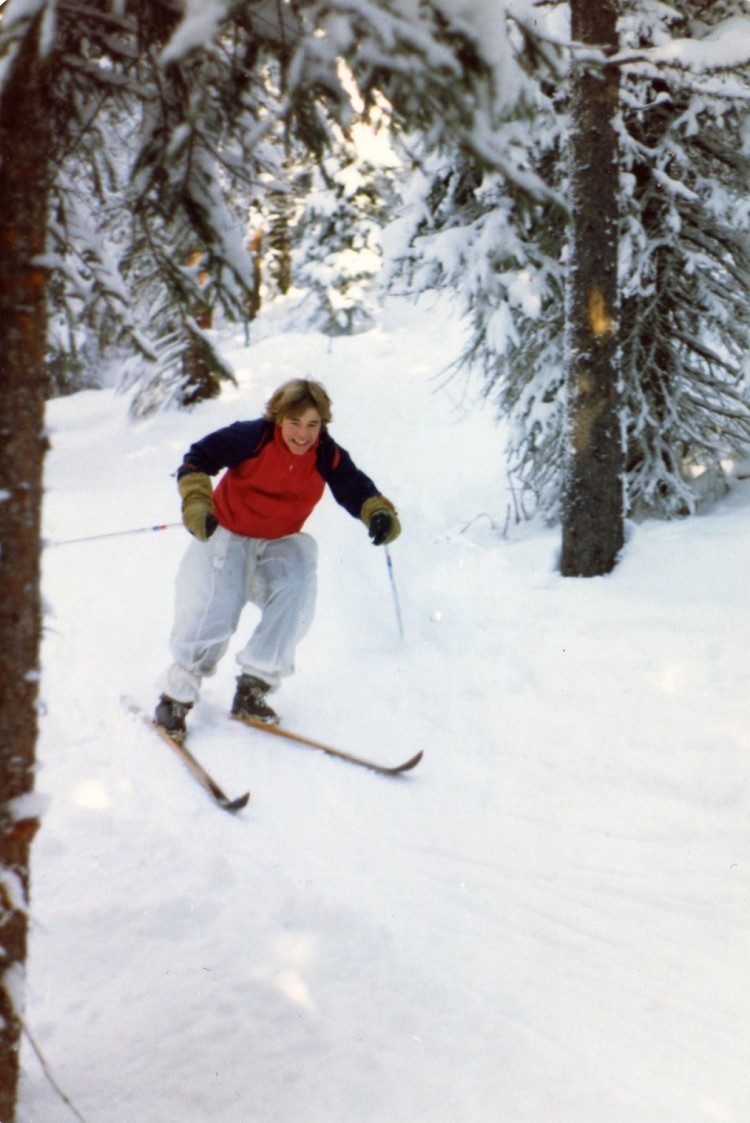


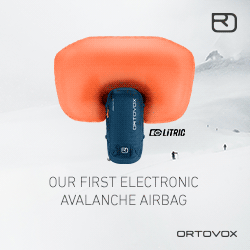

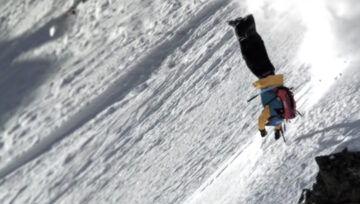
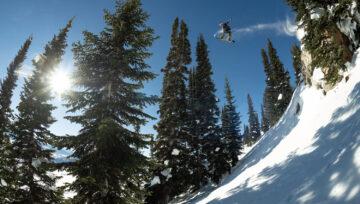
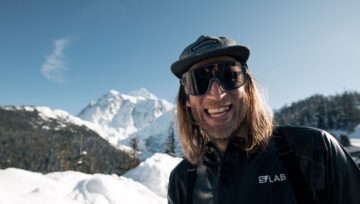
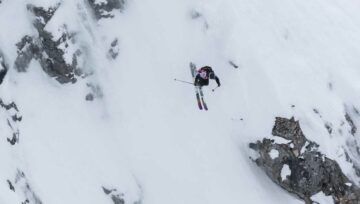
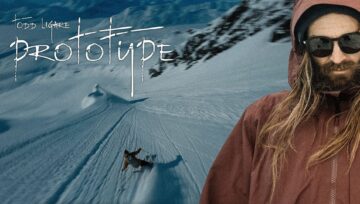


Comments